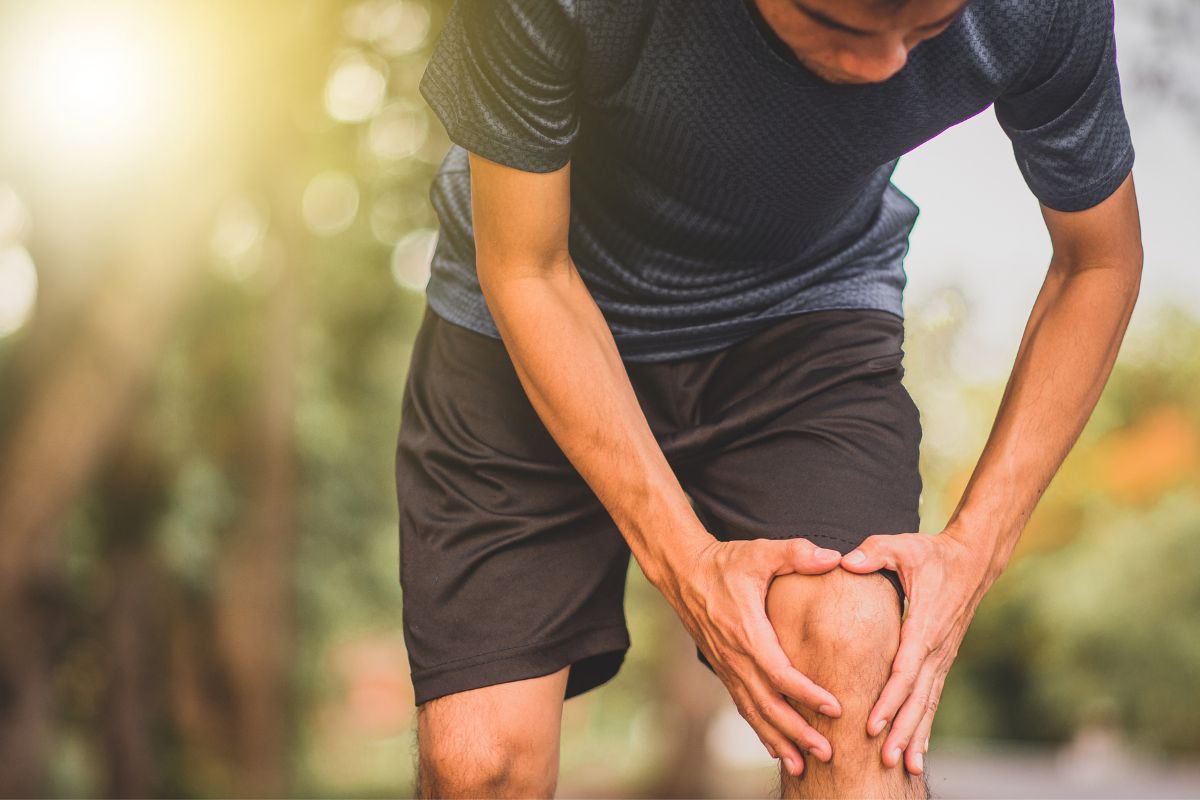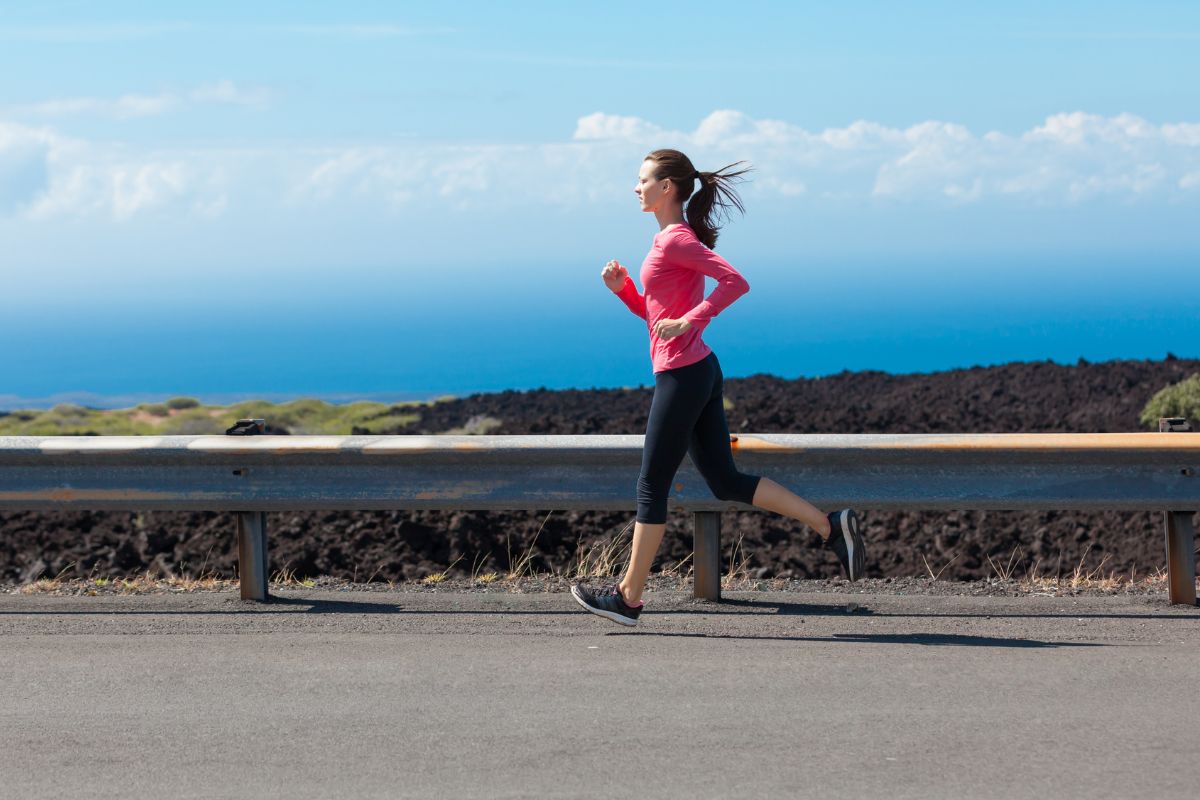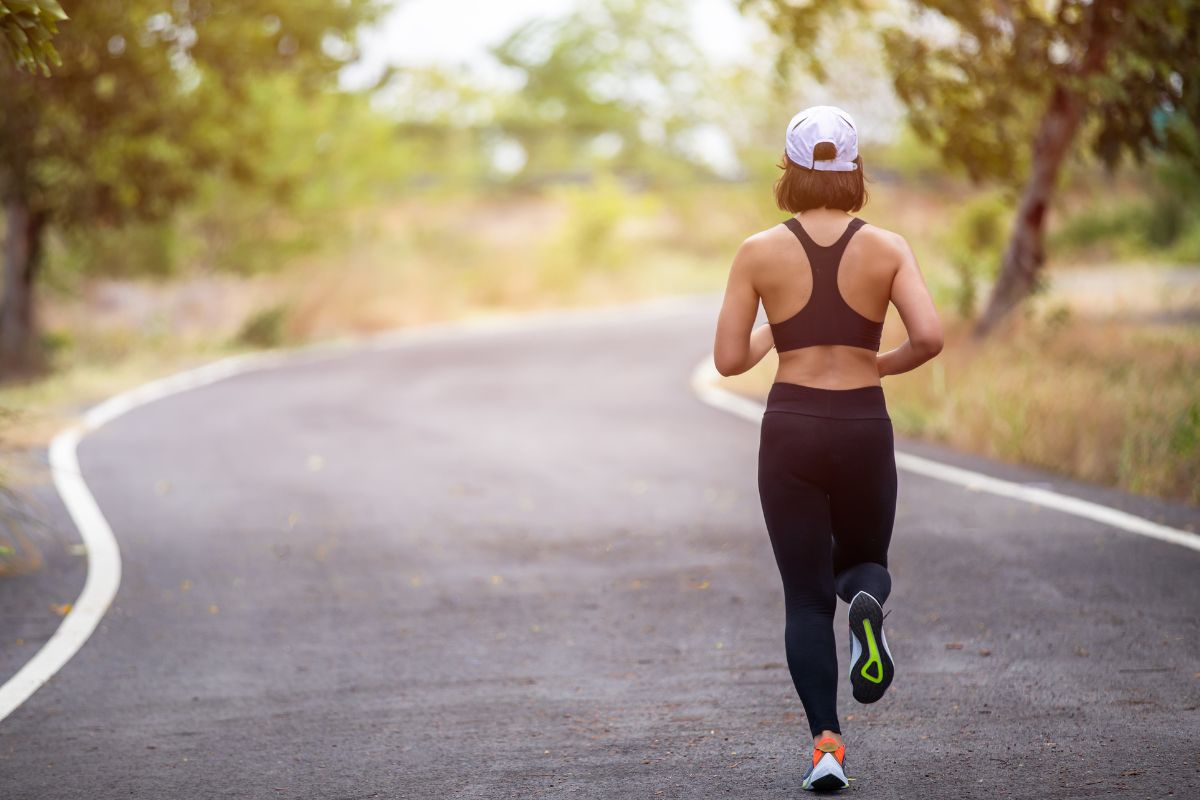Running is a great way of staying in shape, but as it involves weight-bearing, recurring movements, it carries a higher risk of injuries, especially ones that affect the knee.

Knee injuries are very common among runners, and as much as half of all running injuries are related to the knee.
Experiencing knee pain while running can be disconcerting, as you might not know if the problem is serious or not.
If the pain is particularly bad, you might have to stop running for a long time afterward.
There are several reasons why your knee might be hurting while you run, which we’ll cover in this article.
If you’re dealing with any of the possible knee pain causes listed below, you will need to take a break from running, no matter what.
Running on an injury can make the problem worse, and more seriously, you might need to quit the activity altogether.
Common Causes Of Knee Pain During Running
Runners Knee
Patellofemoral pain syndrome, known less formally as runners knee, is the most common reason for knee pain runners might have to deal with.
Pain felt with runners’ knees is mainly around the knee cap.
This may occur during movement, or following a period of sitting with knees bent for a while.
The cause of a runner’s knee is when pressure is applied to the patella (kneecap).
During running, the femur, tibia, and patella all move, which places pressure on the patella.
If this is too much pressure for the kneecap to handle, the tissues can become irritated and swollen.
Runners’ knee can also be a result of improper running form, tight muscles, or skeletal issues, like an unusually elevated knee cap.
Treatment for the runner’s knee begins with rest. Stop running immediately, then use ice packs and pain relievers to deal with the pain.
Rest until the pain stops completely until you’re able to run properly once more.
You can also carry out strength training, focusing on your hips, feet, ankles, and knees.
Consult a physical therapist to find the best treatment plan for your needs. If the pain is still present after a few weeks, see a doctor or medical professional.
Iliotibial (IT) Band Syndrome

This is another common injury among runners, particularly the long-distance type.
IT band syndrome impacts the iliotibial band, which is a connective tissue layer extending from the hip to the knee.
The pain from IT band syndrome is felt on the outer knee. It’s usually caused by tightness or overusing the iliotibial band.
Runners can feel tightness within the band as they often follow back-and-forth motions.
These movements result in friction where the knee and band, resulting in pain and swelling.
Treatment requires immediate rest. Stop running and try foam rolling to promote flexibility of the band.
Strengthening your hips and core can also help prevent IT band syndrome from occurring later on.
If your outer knee still hurts, ice the area and consider taking over-the-counter pain relievers.
IT band syndrome can occasionally become a chronic condition, so see your doctor if the pain lasts longer than a few weeks.
Meniscus Tears
Meniscus tears are injuries within the cartilage that lies between your thigh and shinbone.
Your knees each have two menisci, on the inner and outer parts of your knee.
Meniscus tears lead to swelling, inflammation, and pain around the knee, making it difficult to extend it fully.
These tears happen after repetitive use of the menisci, as well as activities that require twisting movements.
These include changing directions quickly when running, as well as stopping abruptly.
Treat meniscus tears by stopping running until the injury gets better.
Ice and rest are best for milder symptoms, but they might not heal the actual tear.
If the symptoms are particularly bad, you might need surgery.
Jumper’s Knee
Also known as patellar tendonitis, jumper’s knee is another injury that can be caused by running.
It involves pain within the patellar tendon, which is just below the knee, connecting the shin and kneecap.
Jumper’s knee occurs from overusing muscles, or from taking on a hasty increase in running sessions or distance.
The patellar tendon experiences extra stress, leading to small tears that are swollen and inflamed.
Tight leg muscles can also place more pressure on this area.
Treatment begins with a break from running, then using ice packs as needed.
Aim to strengthen your thigh muscles and work on your flexibility, as this can encourage muscle healing too.
Knee Bursitis
Knee bursitis occurs when the bursae, a small fluid sac near the knee, becomes irritated or inflamed.
In runners, two types of knee bursitis can occur.
These are Prepatellar bursitis, which influences the kneecap, and Pes Anserine bursitis, which occurs on the inner knee.
Depending on the type of knee bursitis you have, the pain will occur in the kneecap or on the inner knee beneath the joint.
Knee bursitis happens when the bursae in a knee become inflamed after repetitive stress.
This tends to happen when a runner increases their speed or mileage more than they can handle.
As with the above conditions, ice, rest, and pain-relieving medication can all help relieve the symptoms.
If the case is more severe, physical therapy to strengthen muscles around the knee can help.
You can also have corticosteroid injections or if necessary, undergo surgery that removes the bursa.
If the bursa becomes infected, this might induce a fever, which will need antibiotics to treat.
Your doctor will be able to advise you on the best treatment plan for your needs.
The Bottom Line
Knee pain is a common complaint among runners, as running can place a lot of pressure on the knee joint.
The pain can be a result of many conditions, as listed above. In most cases, knee pain can be treated with enough rest, ice, and pain-relieving medication.
However, any knee pain that lasts for over a few weeks might be a result of something more serious.
If this is the case, consult your doctor, as you might need more exhaustive treatment.
- Can Dogs Run Faster Than Humans? (Running With Your Furry Friend) - October 4, 2022
- 10 Doggie Fun Runs You Will Love [Ultimate Guide] - October 4, 2022
- What Are Division Results In Running? - October 4, 2022








